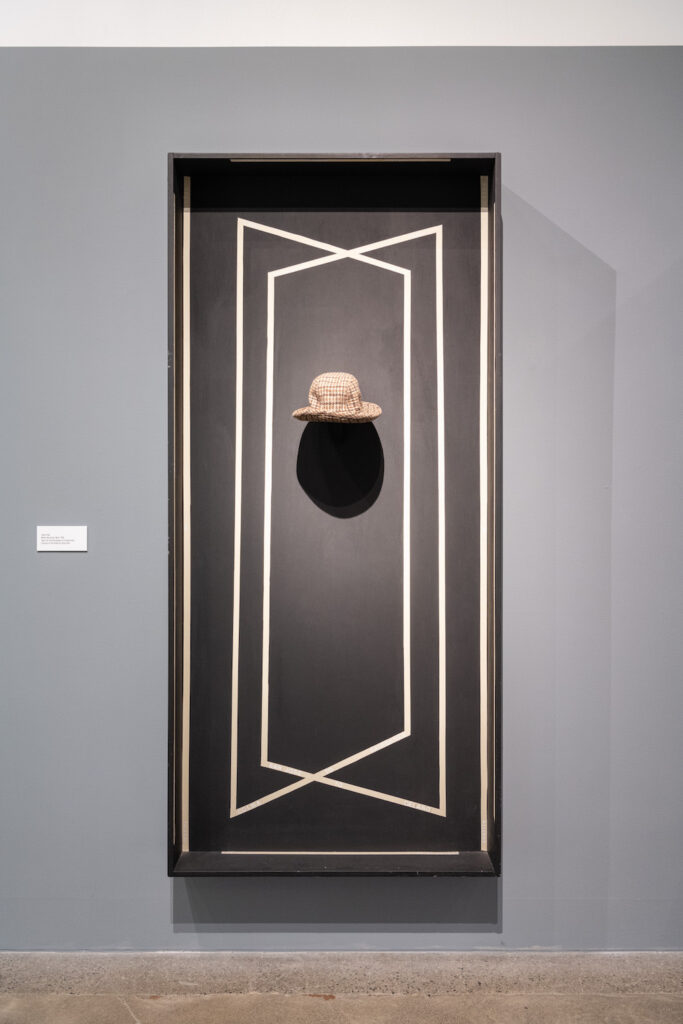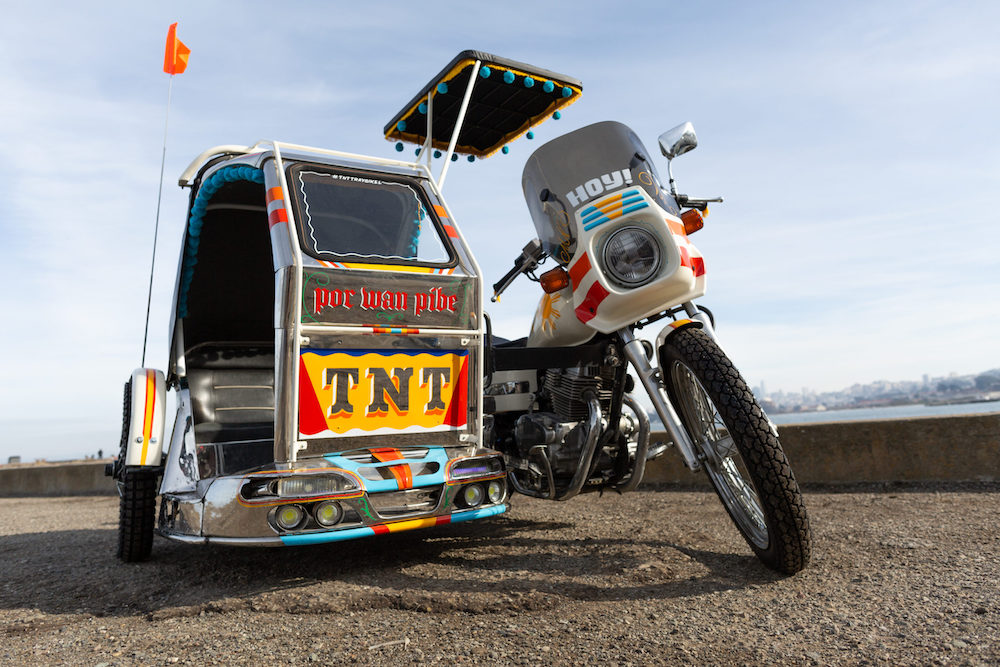When San Francisco Art Institute (SFAI) announced the college was closing on July 15, many in the school’s community—particularly its students, alumni, faculty, and staff—reflected upon how the institution and its people had impacted their personal and creative lives. It was bittersweet that the announcement occurred about a month into two long-overdue exhibitions featuring Carlos Villa (1936—2013), who had been a greatly-admired member of the SFAI faculty for many years.
San Francisco Arts Commission Gallery (SFAC)’s “Roots and Reinvention” (which runs through September 3) and the Asian Art Museum’s “Worlds in Collision” (through October 24) each address the artist’s contributions to a pluralist cultural discourse, while they, importantly, underscore his pedagogical legacy. While Villa’s hybridized Abstract Expressionist works squarely place him in the context of painting, albeit as a disruptor, his feathered cloaks and “Black Door” series expand his body of work to include more nuanced disciplinary and conceptual approaches.

“Kite God” (1979), a cloak made of sumptuous black, white, and brown feathers, floats high above viewers’ heads at SFAC. The silky, glistening feathers, combined with the piece’s life-sized scale cloak, conjures the body in addition to elaborate Pacific Island and Catholic vestments, representing Villa’s own hybridity. With spread wings adorned with feathers, Villa suggests a bird’s flight and a ritual ascension. In Theodore Gonzalves’ introduction to the catalogue Carlos Villa and the Integrity of Spaces, the author explains how Villa’s teacher Walt Kuhlman declared, “that there was no Filipino art history to investigate.” Boldly defying this cultural erasure, Villa’s cloaks assert a pageantry that holds space for the unknown and mystical, where histories can be uncovered and hybrid stories imagined.
In contrast to that luscious cloak, his almost austere, black-and-white geometric “Black Doors” series, also at SFAC, showcases a more restrained conceptual strategy. The early 20th century immigration policies that restricted the immigration of Asian women resulted in a “bachelor culture” within many Asian diasporas. Without Asian women, many Asian men did not initially start families and build permanent homes. In this context, the single room occupancy International Hotel, a.k.a. I-Hotel, became a community hub for Filipino men.

In “Where My Uncles Went” (1995), Villa uses standard-issue doors as a vertical surface and found objects that reference the I-Hotel as a transitory place of exits and entries. Upon the matte black doors, Villa painted intersecting graphic white trapezoids to suggest a revolving door or intersection. A tweed panama-style hat floats in front to invoke a faceless person, a placeholder for the many immigrants who have experienced multiple transitions and homes. Subtly located on the framed doors, engraved brass plaques name the locations of his uncle’s migration as “from” and “to,”: like “Watsonsville from Honolulu,” “Frisco to Sacramento,” and “Ilocos to Imperial Valley.” With elements of text-based conceptualism, Villa also asserts the rectangular flatness of a painting, and sculptural materiality to memorialize the immigration process of his family, and many more unnamed individuals.
SFAC also includes archival posters from Villa’s 2001 and 2005 “Worlds in Collision” symposia, (which the Asian Art Museum’s exhibition title invokes) documenting the visionary multicultural dialogues that the artist initiated through public forums, a book, and in the classroom.

In the Asian Art Museum’s small education gallery, the exhibition extends its scope to artists that include former students, in particular Michael Arcega, in collaboration with Paolo Asuncion, and Mail Order Brides (M.O.B.)—which is itself a collaboration between Eliza O. Barrios, Reanne Estrada, and Jenifer K Wofford. With Arcega and Asuncion’s karaoke motorcycle rickshaw and M.O.B’s audaciously-funny videos and photographs, the influence of Villa’s disruptive cultural critique and hybridity are evident. Importantly, the Asian Art Museum has been hosting numerous public discussions and artist projects, continuing the dialogues that “Worlds in Collision” initiates.
While I never worked with Villa when I studied or taught at SFAI, the substantial impact he had on students is remarkable. It is fitting that when Villa described his teaching philosophy, he wrote that for him, artist and teacher are synonymous words. These two exhibitions only scratch the surface of Villa’s 50 year career, but they demonstrate how, as families, cultures, artists, students, and teachers, we stand on the shoulders of the ones who came before us.
CARLOS VILLA: ROOTS AND REVOLUTION. Runs through September 3. San Francisco Arts Commission Galleries. More info here.
CARLOS VILLA: WORLDS IN COLLISION. Runs through October 24. Asian Art Museum, SF. More info here.





